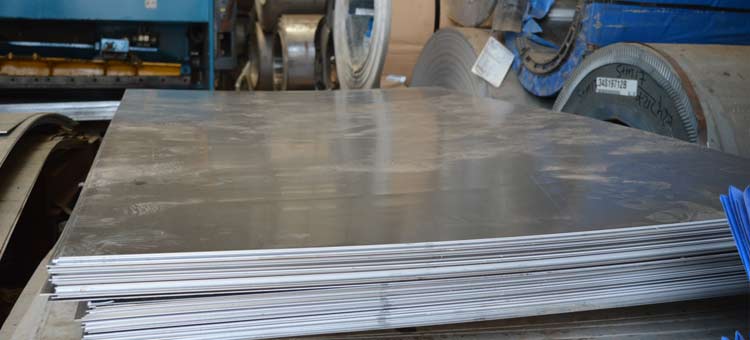1. Types and definitions of corrosion
In many industrial applications, stainless steel can provide satisfactory corrosion resistance. According to the experience of use, in addition to mechanical failure, the corrosion of stainless steel is mainly manifested in: a serious form of corrosion of stainless steel is localized corrosion (ie stress corrosion cracking, pitting corrosion, intergranular corrosion, corrosion fatigue and crevice corrosion) . The failure cases caused by these localized corrosion accounted for almost more than half of the failure cases. In fact, many failure accidents can be avoided through reasonable selection of materials.
① Stress corrosion cracking (SCC): The chemical source of SCC is chloride ions. Chloride ions chemically interact with the material at the crack tip, which makes it easier for the crack to spread around because the tensile stress at the crack tip is the largest. Stress corrosion cracking has a brittle fracture morphology, but it can also occur in highly ductile materials. The necessary conditions for stress corrosion cracking to occur are the presence of tensile stress (whether residual stress or applied stress, or both) and a specific corrosive medium. The formation and expansion of the profile is approximately perpendicular to the direction of the tensile stress. The stress value that causes stress corrosion cracking is much smaller than the stress value required to fracture the material in the absence of corrosive media. Microscopically, the cracks passing through the grains are called transgranular cracks, and the cracks that expand along the grain boundaries are called intergranular cracks. up to its breaking stress in air), the material breaks as a normal crack (in ductile materials, usually by aggregation of microscopic defects). Thus, a section of a part that fails due to stress corrosion cracking will contain characteristic areas of stress corrosion cracking as well as areas of "dimples" associated with aggregation of microdefects.
② Pitting corrosion: It is a form of localized corrosion that leads to corrosion.
③ Intergranular corrosion: The grain boundaries are the boundaries of disordered interlacing between grains with different crystallographic orientations. Therefore, they are the segregation of various solute elements in the steel or the precipitation of metal compounds (such as carbides and delta phases). Beneficial District City. Therefore, it is not surprising that in some corrosive media, grain boundaries may be etched first. This type of corrosion is called intergranular corrosion, and most metals and alloys may exhibit intergranular corrosion in certain corrosive media.
④ Crevice corrosion: It is a form of localized corrosion, which may occur in the crevices where the solution is stagnant or in the surface of the shield. Such gaps can be formed at metal-to-metal or metal-to-nonmetallic joints, for example, at rivets, bolts, gaskets, valve seats, loose surface deposits, and marine life candles.
⑤ General corrosion: is a term used to describe the corrosion phenomenon that occurs in a relatively uniform manner on the entire alloy surface. When general corrosion occurs, the village material gradually becomes thinner due to corrosion, and even the material fails due to corrosion. Stainless steel may exhibit general corrosion in strong acids and alkalis. Failure problems due to general corrosion are less of a concern because this corrosion can usually be predicted by a simple immersion test or by consulting literature on corrosion.

2.Corrosion resistance of commonly used stainless steel
304: It is a universal stainless steel, which is widely used to make equipment and parts that require good comprehensive properties (corrosion resistance and formability).
① 301: Stainless steel exhibits obvious work hardening when deformed, and is used in various occasions requiring high strength.
② 304L: It is a variant of 304 stainless steel with lower carbon content, which is used for occasions where welding is required. The lower carbon content minimizes carbide precipitation in the heat-affected zone near the weld, which can lead to intergranular corrosion (weld erosion) of stainless steel in some environments.
③ 309, 310, 314 and 330: The nickel and chromium content of stainless steel are relatively high, in order to improve the oxidation resistance and creep strength of steel at high temperature. 30S5 and 310S are variants of 309 and 310 stainless steel, the only difference being that the carbon content is lower, in order to minimize the precipitation of carbides near the weld. 330 stainless steel has a particularly high resistance to carburization and thermal shock resistance.
④ 316 and 317: Type stainless steel contains aluminum, so its resistance to pitting corrosion in marine and chemical industrial environments is much better than 304 stainless steel. Among them, the variants of type 316 stainless steel include low-carbon stainless steel 316L, nitrogen-containing high-strength stainless steel 316N, and free-cutting stainless steel 316F with high sulfur content.
⑤ 321, 347 and 348 are stainless steel stabilized with titanium, niobium plus tantalum and niobium respectively, which are suitable for welding components used at high temperatures. 348 is a kind of stainless steel suitable for the nuclear power industry, which has certain restrictions on the combined amount of tantalum and diamond.